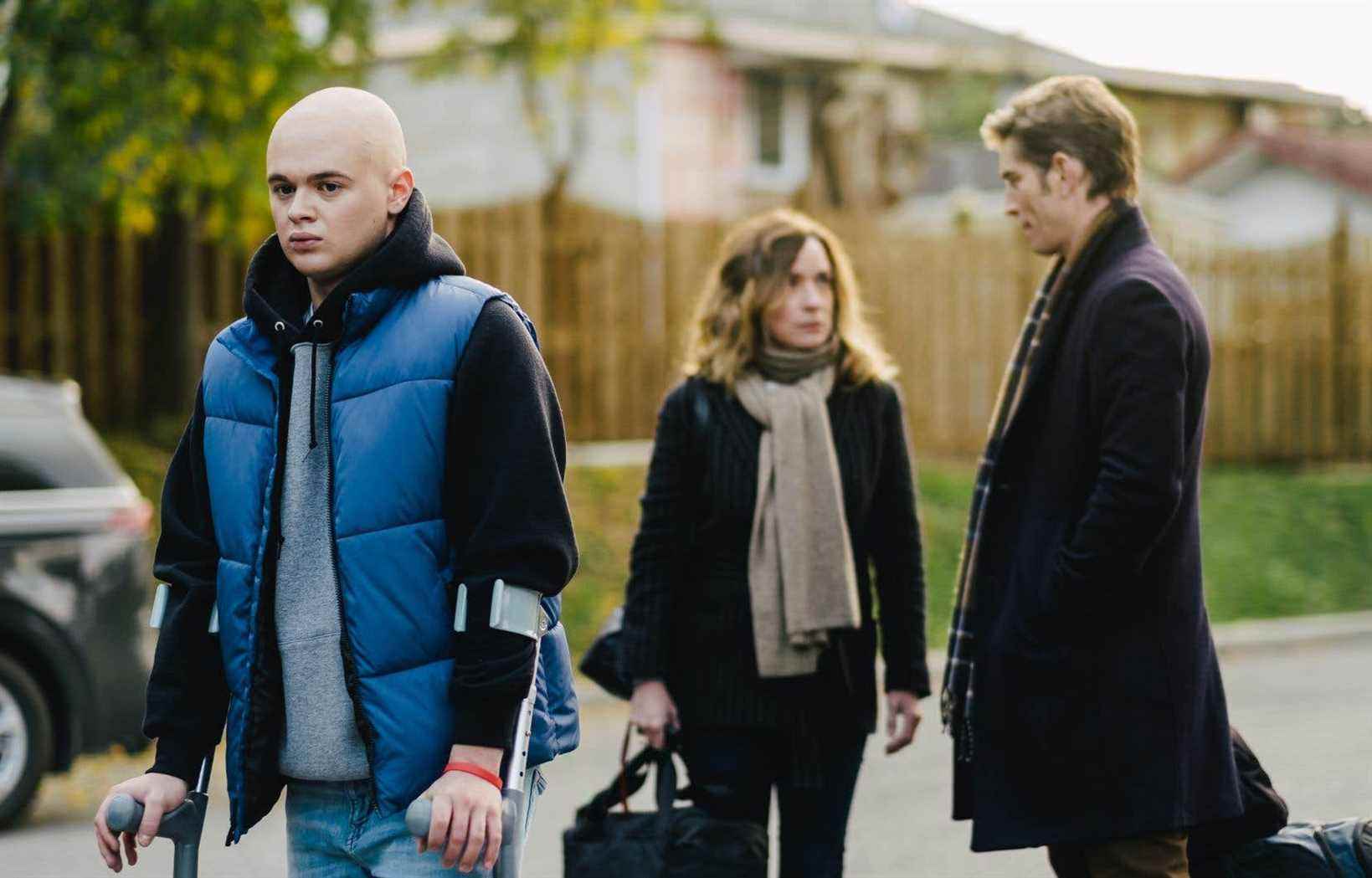Critically ill children and adolescents make unlikely friendships on the pediatric floor of the hospital in which they are treated. At any time, the proposal could be scary. In this time of extreme gloom and anger, Red bracelets seems the very example of fiction which falls at the wrong time. Vade retro, series of bad omen!
Well no. If the emotion is omnipresent in the first two episodes presented to the press, it is declined in the drama, of course, theme obliges; but also in these feelings and states that we wish each other repeatedly since the beginning of this new year.
Thus, there is resilience, love, friendship, light, courage, complicity, in the series directed by Yan England (The countries above, The breakaway), adaptation by Michel Brouillette and Stéphanie Perreault (Bugs of life) from the Catalan series Vermellas polseres where the author, Albert Espinosa Puig, looks back on his early years. From 14 to 24, he lived in a hospital because of the three cancers that struck him. He went through the ordeal by uniting with other patients his age to form a group, “the red bracelets” – the color of rubber rings slipped on the wrists of young patients before they underwent surgery. .
The series has been broadcast in several countries and has been so successful that it has been adapted in particular in Germany, Italy, Peru, Egypt and the United States. Encore Television has obtained the rights to it and, in collaboration with Quebecor Content, has developed ten one-hour episodes which have just started broadcasting on TVA.
The original show dates back ten years, the Brouillette-Perreault tandem has given itself the mission of making it contemporary and, of course, adapting it to the reality of Quebec. “We rewrote the entire texts. A tough job, ”summarized Stéphanie Perreault, Monday, in a virtual press conference. “It had to reflect Quebec values, the reality of our health system… and our humor,” adds Michel Brouillette.
If the bright side was already present in Vermellas polseres, the families of young patients were also brought to the fore in Red bracelets : when a child is affected, the entire family group is affected. The authors have also made a point of presenting several family models; to qualify the characters by working on their qualities, their faults, their defense mechanisms; and to incorporate girls with “red bracelets” – there was only one in the original series.
Dig, study, play
Supported by extremely authentic dialogues in which young people will recognize themselves and where parents will recognize their children (because the series is addressed to both), Red bracelets takes place mainly on the pediatric floor of a fictitious hospital in the Laurentians.
We meet Justin (Noah Parker), a promising hockey player with bone cancer; Félix (Anthony Therrien), who suffers from a similar illness and has already undergone six operations; Flavie (Audrey Roger), who lives with an eating disorder; Kevin (Étienne Galloy), who suffered multiple fractures in an ATV accident; Kim (Léanne Désilets), under observation at the hospital where she was admitted after fainting possibly due to a heart problem; Lou (Milya Corbeil-Gauvreau), whose doctors study behavioral disorders; Albert (Malick Babin), in a coma for four months and who serves as the narrator for the series.
They come from different backgrounds and have different personalities from each other, but even the most abrasive (let’s think of Kim who makes appalling comments in the softest of voices), we can feel it, have a secret, therefore a flaw, which adds texture to them. They all have something that quickly attaches spectators to them.
It must be said that this young cast, superbly directed by Yan England, “has a bottomless talent, argues the director. Not only are they talented as actors and actresses, but they are extremely hardworking ”. And to mention how much everyone has done their research (in a good sense) by reading about “their” disease, and even by meeting people who have it; and how, once on set, they were ready for anything, with a smile, for 55 “very intense” days.
Around them, high-caliber actors and actresses embody the members of the hospital staff (David Savard, Éric Bernier, Martin Laroche, etc.) and the parents (Isabelle Blais, Frédérick De Grandpré, Julie Beauchemin, Marcel Leboeuf, Sébastien Delorme , etc.). Following these in suffering, incomprehension, denial, awkwardness, anger, mourning, resilience, sheds another light on the disease when it is experienced by those who are most dear to us. Many of these adults deserve a red courage bracelet.
